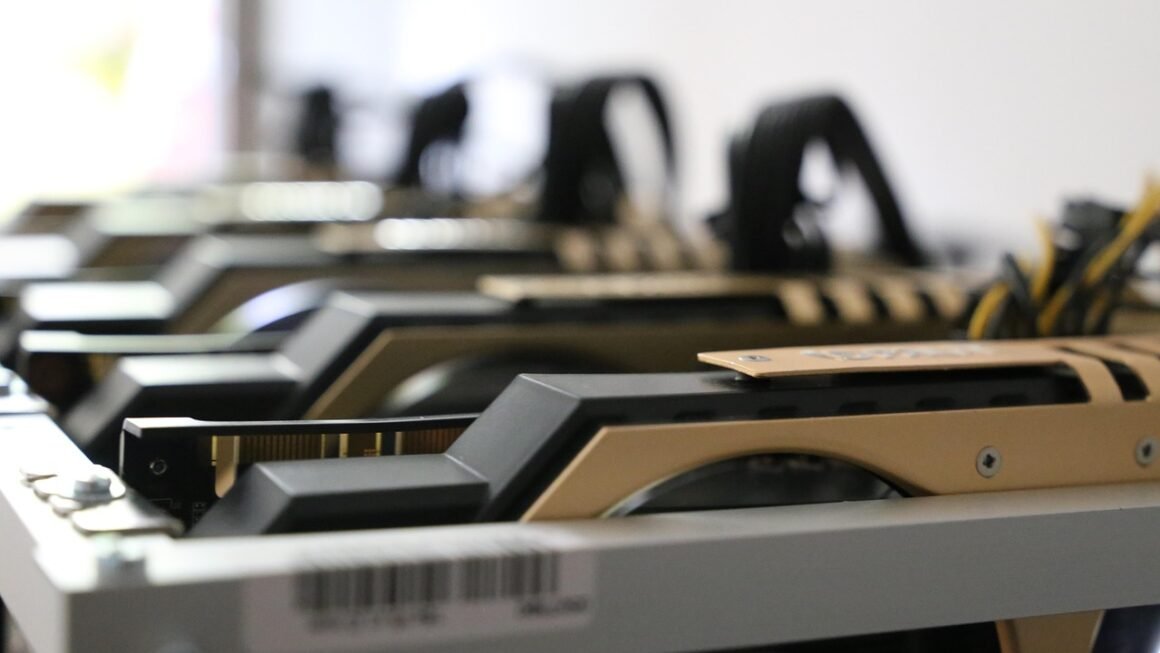Navigating the exciting world of cryptocurrency comes with a critical responsibility: securing your digital assets. The decentralized nature of blockchain technology, while offering unparalleled freedom and opportunity, also places the onus of security squarely on the user. With stories of hacks and scams making headlines, understanding and implementing robust crypto security measures is no longer optional – it’s essential for protecting your investments and peace of mind.
Understanding the Threat Landscape
Common Crypto Security Risks
The crypto world is unfortunately rife with security threats. Recognizing these dangers is the first step in mitigating them.
- Phishing Attacks: Cybercriminals often impersonate legitimate crypto services or individuals to trick users into revealing their private keys or login credentials.
Example: Receiving an email seemingly from your exchange asking you to update your password. Always verify the sender’s address and never click links in suspicious emails.
- Malware: Malicious software can be designed to steal crypto keys, drain wallets, or inject malicious code into transactions.
- Exchange Hacks: Centralized exchanges, while convenient, are vulnerable to large-scale hacks, potentially resulting in significant losses for users.
Data Point: Cryptocurrency exchange hacks led to the loss of over $3 billion in 2023 alone.
- Wallet Vulnerabilities: Weakly secured or outdated wallets can be easily compromised, allowing attackers to access your funds.
- Social Engineering: Manipulating individuals to divulge sensitive information through deception and psychological manipulation.
Example: A scammer pretending to be customer support and convincing you to share your seed phrase.
The Human Factor in Crypto Security
Often, the weakest link in crypto security isn’t the technology itself, but rather human error. Password reuse, neglecting two-factor authentication (2FA), and falling victim to social engineering scams are common mistakes that can lead to significant losses.
- Actionable Takeaway: Always be skeptical of unsolicited communications, especially those asking for sensitive information. Double-check URLs and sender addresses to avoid phishing scams.
Securing Your Wallets: A Multi-Layered Approach
Choosing the Right Wallet Type
Different types of wallets offer varying levels of security and convenience. Understanding the trade-offs is crucial for making an informed decision.
- Hardware Wallets (Cold Storage): These physical devices store your private keys offline, making them highly resistant to online attacks. They are generally considered the most secure option.
Example: Ledger and Trezor are popular hardware wallet brands.
- Software Wallets (Hot Wallets): Software wallets are installed on your computer or mobile device. They offer convenience but are more vulnerable to malware and hacking.
Types: Desktop wallets, mobile wallets, browser extensions.
- Exchange Wallets: Holding your crypto on an exchange is convenient for trading, but it also means trusting the exchange with your funds. It’s generally recommended to only keep crypto on exchanges for active trading and to move the majority to a more secure wallet.
Implementing Strong Password Management
A strong, unique password is your first line of defense against unauthorized access.
- Password Best Practices:
Use a password manager to generate and store complex passwords.
Never reuse passwords across different platforms.
Enable two-factor authentication (2FA) on all crypto-related accounts.
Consider using a passphrase instead of a simple password for added security.
Two-Factor Authentication (2FA) and Multi-Sig
Adding an extra layer of security with 2FA significantly reduces the risk of unauthorized access.
- Types of 2FA:
SMS-based 2FA: Less secure due to SIM swapping vulnerabilities.
Authenticator App (e.g., Google Authenticator, Authy): More secure than SMS.
Hardware Security Key (e.g., YubiKey): The most secure 2FA option.
- Multi-Signature (Multi-Sig) Wallets: Require multiple private keys to authorize a transaction, adding an extra layer of security. This is especially useful for teams or organizations managing shared crypto assets.
Example: A 2-of-3 multi-sig wallet requires two out of three authorized parties to approve a transaction.
Safe Crypto Practices
Protecting Your Seed Phrase
Your seed phrase (recovery phrase) is the master key to your crypto wallet. Keeping it safe is paramount.
- Seed Phrase Security Best Practices:
Never store your seed phrase digitally (e.g., on your computer, in the cloud).
Write your seed phrase down on paper and store it in a secure location.
Consider using a metal seed phrase backup for increased durability.
Never share your seed phrase with anyone.
Be wary of fake hardware wallets or software wallets that prompt you to enter your seed phrase during setup – this is a common scam.
Staying Informed and Vigilant
The crypto landscape is constantly evolving, and new security threats emerge regularly. Staying informed and vigilant is crucial for protecting your assets.
- Keep Your Software Updated: Regularly update your wallets, operating systems, and antivirus software to patch security vulnerabilities.
- Be Aware of Scams: Stay informed about common crypto scams and phishing techniques.
- Research Projects Before Investing: Understand the technology and security measures of any crypto project you’re considering investing in.
- Use Reputable Exchanges: Choose established and reputable crypto exchanges with strong security measures.
- Monitor Your Accounts Regularly: Check your wallet and exchange accounts regularly for any suspicious activity.
Secure Communication
Securing your communication channels is vital to prevent information leaks that could compromise your crypto holdings.
- Use encrypted messaging apps: Utilize apps like Signal or Telegram with end-to-end encryption for private conversations about crypto.
- Be cautious of sharing information online: Avoid posting sensitive details about your crypto holdings or investment strategies on social media or public forums.
- Verify identities: Always double-check the identities of individuals you’re communicating with, especially when discussing financial matters.
Backup and Recovery Strategies
Planning for the Unexpected
Even with the best security measures, unexpected events can happen. Having a solid backup and recovery plan is essential.
- Regular Backups: Regularly back up your wallet files and encryption keys to a secure location.
- Test Your Recovery Process: Periodically test your recovery process to ensure that you can restore your wallet in case of loss or damage.
- Estate Planning: Consider including your crypto assets in your estate plan to ensure that your heirs can access them in the event of your death or incapacitation.
Conclusion
Securing your cryptocurrency requires a proactive and multifaceted approach. By understanding the threat landscape, implementing strong security measures, and staying informed, you can significantly reduce your risk of becoming a victim of crypto theft or scams. Remember, the responsibility for securing your digital assets rests with you. Take the necessary steps to protect your investments and enjoy the benefits of the crypto revolution with confidence.



